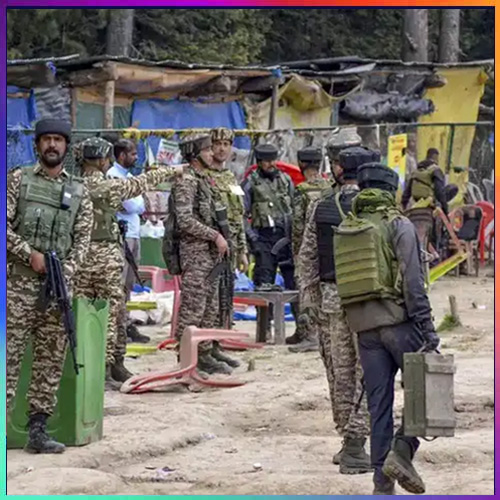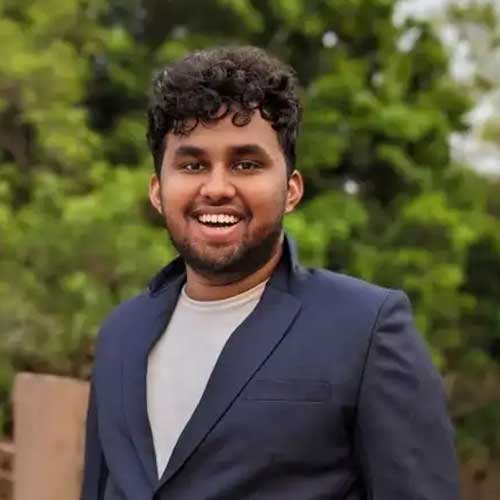
Jammu & KashmirIn the quiet outskirts of Srinagar's Nowgam locality, where the November night air carries the weight of perpetual vigilance, a standard forensic procedure transformed into a nightmare.
At exactly 11:22 PM on November 14, 2025, approximately 360 kilograms of seized explosives, including ammonium nitrate, potassium nitrate, sulfur, phosphorus, and electronic detonators, erupted in a massive detonation. The explosion obliterated the Nowgam Police Station, incinerated vehicles, and hurled shrapnel across a two-kilometer radius. Nine lives were extinguished in an instant: one State Investigation Agency inspector, three Forensic Science Laboratory experts, two revenue officials, two police photographers, and a local tailor. Thirty-two others, mostly police personnel, suffered grievous injuries from burns, blast waves, and embedded debris. The fireball lit up the night sky, its roar reverberating up to 30 kilometers away, while smoke and ash choked nearby homes.
Interrogation of arrested suspects yielded critical intelligence on network structure and funding. However, the module's resilience, sustained by ideological indoctrination from figures like Irfan Wagay, underscores deficiencies in deradicalization and psychological containment.Recovery management represented the most egregious failure. International guidelines from the United Nations Office on Drugs and Crime advocate immediate "render-safe" procedures, including controlled disassembly by bomb data centers and cross-referencing against global explosive signature databases. The United States Federal Bureau of Investigation's Terrorist Explosive Device Analytical Center maintains real-time repositories that enable rapid threat characterization.In Nowgam, bulk shipment without on-site neutralization or preliminary analysis preserved the materials' destructive potential. The loss of key investigators, including the State Investigation Agency inspector leading the forensic coordination, compromised evidentiary chains and delayed the broader investigation.
Global Precedents: Lessons Etched in Tragedy
The Nowgam explosion echoes catastrophic mishandlings worldwide. The 2020 Beirut port disaster, triggered by 2,750 tons of improperly stored ammonium nitrate, killed 218 people and demonstrated the lethal consequences of casual storage protocols. Canada's 2013 Lac-Mégantic rail derailment, involving flammable cargo transported without adequate safeguards, claimed 47 lives and prompted mandatory route risk assessments and real-time monitoring systems.The 2005 London 7/7 bombings led the United Kingdom to establish mobile forensic laboratories that process explosive residue at incident sites, eliminating transport risks. The 1988 Lockerbie bombing, where Pan Am Flight 103 was destroyed by a small explosive device, resulted in centralized evidence management protocols that prevent fragmentation across jurisdictions.
These incidents share common threads with Nowgam: institutional complacency, procedural drift, and underinvestment in specialized infrastructure. Each tragedy birthed transformative reforms: Beirut spurred United Nations protocols for explosive marking and tracking; Lac-Mégantic mandated artificial intelligence predictive routing; London and Lockerbie established integrated forensic networks. India, despite the 2019 amendment to its Explosives Rules, has yet to enforce these lessons in high-threat environments like Jammu & Kashmir.
Strategic Imperatives: Forging Resilience from Ruin
The National Investigation Agency's expanded mandate offers an opportunity for systemic renewal. Immediate priorities must include establishment of blast-proof explosive depots in each sensitive district, equipped with automated environmental controls and remote sensing arrays. Mobile forensic laboratories, modeled on United Kingdom practices, should deploy to recovery sites within hours, enabling on-scene analysis and eliminating bulk transport.
Artificial intelligence integration must extend beyond detection to predictive risk modeling. The United Nations Office on Drugs and Crime's open-source intelligence tools for tracking dual-use materials offer a proven framework.
Annual standard operating procedure drills, conducted jointly with military explosive ordnance disposal units, must become mandatory.
Terrorist handling requires hybrid protocols combining physical custody with psychological intervention. Australia's deradicalization centers, which achieve measurable reductions in recidivism through structured ideological challenge programs, provide a viable model.
The United Nations Military Evidence Guidelines ensure unbroken chain-of-custody integrity, preventing investigative losses like those suffered in Nowgam.Funding streams exist within the Ministry of Home Affairs' 4,000 crore rupee modernization allocation.
Political will, not resources, remains the constraint. The fallen of Nowgam demand more than compensation; they demand transformation.
In the smoldering ruins of Nowgam Police Station, where fragments of evidence mingle with human remains, lies the blueprint for a more resilient counter-terrorism apparatus. The doctors who weaponized their education, the explosives that turned a police outpost into a pyre, and the procedures that failed under pressure collectively indict a system operating at the edge of catastrophe.Yet within this indictment resides opportunity. The National Investigation Agency's probe must produce not merely a report but a revolution: in intelligence fusion, operational tempo, procedural rigor, and material stewardship. As Srinagar awakens to another dawn under heightened alert, the nation confronts a choice: perpetuate vulnerabilities exposed by nine unnecessary deaths, or forge an architecture that ensures such sacrifice becomes the final price of complacency.The men who perished, Inspector Asrar Ahmed, FSL expert Muzaffar Ahmed, their colleagues in uniform and civilian attire, did not die because terror prevailed. They died because the system designed to defeat terror betrayed them through neglect. Their memory demands nothing less than excellence.
See What’s Next in Tech With the Fast Forward Newsletter
Tweets From @varindiamag
Nothing to see here - yet
When they Tweet, their Tweets will show up here.




























